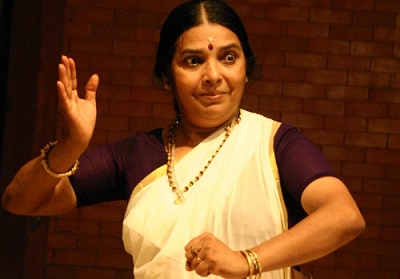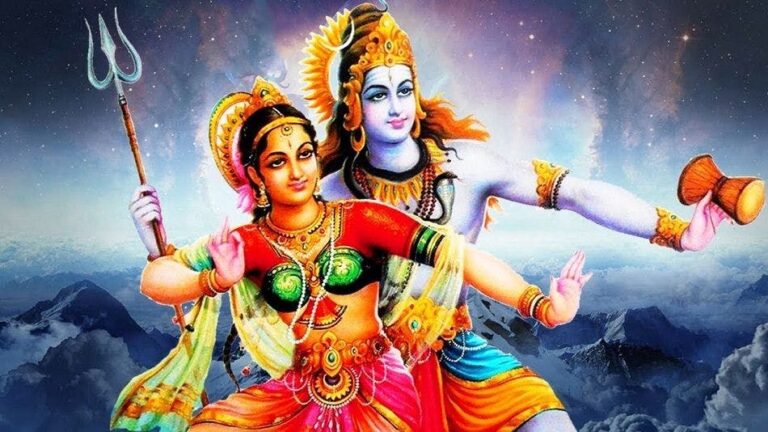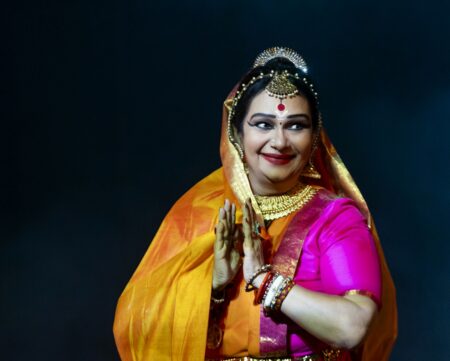Shiva matters only when it exists in union with Bhairavi. She appears as Mohini, an enchantress, in front of the meditating Bhairava.

Dance is centric to the stories of Siva and Parvathi. While they remain as stories and don’t carry much historical significance, they do reveal the philosophical contexts and circumstances that influenced the evolution of classical dances and other performing art forms of India. Philosophies that emerged in ancient India had deeply influenced music, rituals, dance, martial arts and Yoga practices. We can easily find these philosophical influences still reflected in the modern-day practise of these forms.
The Vedic, Vedantic and Tantric philosophies of Hinduism and Buddhism that emerged and spread across India hundreds or thousands of years ago, had slowly and steadily percolated into the art and rituals that are practised even today. For example, despite their different origins, the basic principles of yoga are closely related to the Sankhya and Vedanta philosophies. Similarly, the temple origins of most of today’s classical dance forms indicate their potential lin;ks to Tantric practices of Buddhism or Hinduism.
Irrespective of the relevance or validity of these philosophies, these performing art forms, and spiritual pursuits tie us onto an unbroken chain of history and culture lasting over thousands of years and make India one of the oldest and still living civilizations of the world… In the modern globalized world, these cultural identities are of paramount importance for retaining the richness and diversity of our societies. Collectively they represent the oral and intangible heritage of mankind.
In this article, we explore some of the popular mythical stories and the philosophies ingrained in them that may have influenced the origins and sustenance of the dance form of Mohiniyattam in Kerala.
Shiva and Shakti
The energy that pulsates the whole universe arises from a single source embodied as the female form shakti. Bhairavi is the name of this Goddess. The supreme state of consciousness is represented by Shiva, the male counterpart.
Despite being the supreme state of existence, Shiva matters only when it exists in union with Bhairavi. Just as a living being emerges from the union of male and female, the phenomenon of life, Prana, emerges from the union of Shiva and Shakti.

Prana is characterized by motion. As the heart starts beating in an embryo, prana pulsates or dances revealing its presence in an individual. This is the feeling of ‘l” in every living being. Every living being has this feeling of I-ness.
Every organism feels that it exists. That feeling that ‘l exist’ which happens to innumerable living beings is a reflection of the universal state of consciousness just as the sun reflects in all the mirrors held against it. This pulsation or dance of life emerging from the Shakti is the reason for the existence of the universe. This way the dance of the prana coexists with human nature.
Whatever be the relevance of such theories, when gaiety pulsates in the human soul, the human body reciprocates by reverberations in the limbs. That is why dance is considered eternal. The external movements occur in tandem with the internal vibrations. When the internal dance outpours through the human body accompanied by music in different genres and rhythms it manifests as nritha, nrithya and natya.
Parvathi as Mohini
Bhairava is the form of Siva who has transcended earthly emotions. But even in that form, he is enticed by Parvathi who appears as Bhairavi. She is Nateshwari – the goddess of dancing. Creation is her purpose.
She appears as Mohini, an enchantress, in front of the meditating Bhairava. Mohini performs the Lasya dance to entice Siva. Once Siva is enchanted they dance together. From a metaphysical interpretation the Prakrithi, the Mother Nature, is attracting the Purusha, the Universal spirit for creation. The whole universe manifests from the union of the Purusha and the Prakrithi. The dance of Siva and Parvati that leads to creation is often treated as a metaphor of interaction of Purusha and Prakrithi which results in the manifestation of the whole world. This is the beautiful metaphor of the world which poets often refer to as a world theatre stage.
The themes we see in such stories of Siva and Parvathi like love, lust, mother goddess worship, etc. have been deep-rooted in the culture of Kerala where Tantric philosophy was nurtured for a long period. No wonder if these have influenced the themes of ancient Mohiniyattam repertoire.
Read the introduction
(Assisted by Sreekanth Janardhanan)





1 Comment
Hi,
I have a question. From the stories I heard from my grandmother, I understood that Mohini devi is an avataar of Lord Vishnu? But in the article, Mohini devi is mentioned as another version of Bhairavi devi? I am a little confused here. Could you help me to understand this better?
Thanks!